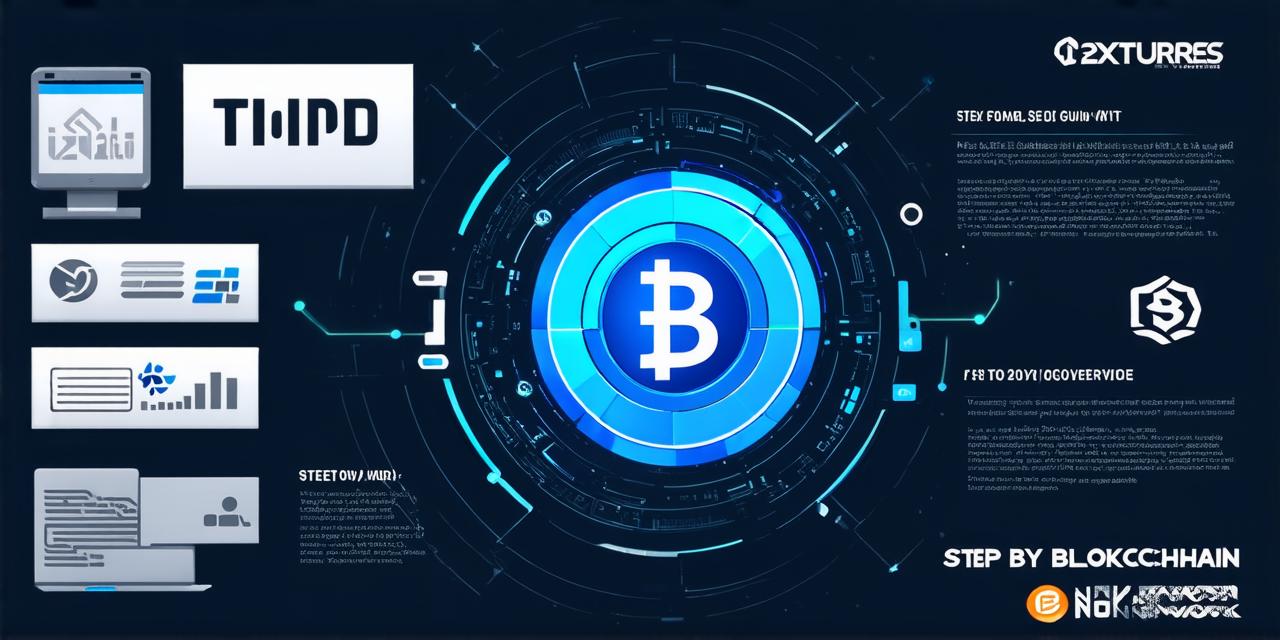Blockchain technology has revolutionized the way we store and share data. It is an open-source platform that provides a secure and transparent way to conduct transactions, record data, and maintain a decentralized system of governance.
Introduction
Blockchain technology has revolutionized the way we store and share data. It is an open-source platform that provides a secure and transparent way to conduct transactions, record data, and maintain a decentralized system of governance.
Step 1: Choose the Right Blockchain Network
Before joining any blockchain network, it is important to choose one that aligns with your goals and interests. There are several popular blockchain networks to consider, including Bitcoin, Ethereum, Hyperledger Fabric, Corda, and Ripple.
Each of these networks has its own unique features, benefits, and drawbacks.
For example, Bitcoin is a decentralized network that allows for peer-to-peer transactions without the need for intermediaries. It is the first cryptocurrency and has a large and active community. However, it can be slow and expensive to use.
On the other hand, Ethereum is a platform for building decentralized applications (dApps) using smart contracts. It allows for more complex transactions and has a larger developer community. However, it can be more difficult to use and requires more technical expertise.
Step 2: Create a Wallet
The next step in joining a blockchain network is to create a wallet. A wallet is a digital storage space where you can store your cryptocurrencies or other assets.
There are several types of wallets available, including web-based, desktop, and mobile wallets.
Step 3: Purchase Cryptocurrency
Once you have created a wallet, the next step is to purchase cryptocurrency. There are several ways to buy cryptocurrency, including exchanges, over-the-counter (OTC) markets, and initial coin offerings (ICOs).
Step 4: Join a Node or Staking Pool
A node is a computer that maintains the blockchain network by verifying transactions and adding them to the public ledger. By joining a node, you can help secure the network and earn rewards in the form of cryptocurrency.
A staking pool is a group of nodes that work together to validate transactions and earn rewards. By joining a staking pool, you can increase your chances of earning rewards while also benefiting from the collective power of the pool.
Step 5: Participate in Governance
One of the benefits of joining a blockchain network is that it allows for decentralized governance. This means that decisions about how the network operates are made by its users, rather than by centralized authorities.
To participate in governance, you can vote on proposals to improve the network or create new features. You can also propose new ideas and initiatives that could benefit the network.
Case Study: Joining the Ethereum Network
Let’s take a look at an example of how to join the Ethereum network.
- Choose the Right Wallet: There are several types of wallets available for Ethereum, including web-based, desktop, and mobile wallets. For this example, we will use MetaMask, a popular web-based wallet.
- Install MetaMask: Visit the MetaMask website and download the extension for your browser. Once installed, create an account and follow the prompts to set up your wallet.
- Purchase Ethereum: There are several exchanges that allow you to buy Ethereum, including Coinbase, Binance, and Kraken. Choose one and follow the instructions to purchase Ethereum using fiat currency or other cryptocurrencies.
- Join a Node or Staking Pool: You can join an existing node or set up your own using software such as Geth or Truffle Suite. Alternatively, you can join a staking pool using services such as Stakin or StakingRewards.
- Participate in Governance: Ethereum has a decentralized governance model called the Ethereum Improvement Proposals (EIPs). You can view and vote on proposals to improve the network by visiting the EIP page on GitHub.
Summary
Joining a blockchain network can be a rewarding experience that allows you to contribute to a decentralized ecosystem and earn rewards in the form of cryptocurrency. By following these steps, you can get started on your journey to becoming a blockchain developer. Remember to always do your research and stay up-to-date with the latest developments in the field.
FAQs
Q: What is a blockchain network?

A: A decentralized network that allows for secure and transparent transactions without intermediaries.
Q: How do I create a wallet?
A: Choose a type of wallet (web-based, desktop, or mobile) and follow the instructions to set it up.
Q: What is a node?
A: A computer that maintains the blockchain network by verifying transactions and adding them to the public ledger.
